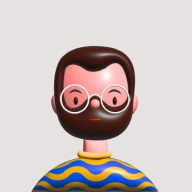
i
UST
Filter interviews by
UST Associate Software Engineer Interview Questions and Answers
UST Associate Software Engineer Interview Experiences
4 interviews found
I applied via Campus Placement
6 medium coding questions
(2 Questions)
- Q1. What do you mean by Object oriented programing?
- Ans.
Object-oriented programming is a programming paradigm based on the concept of objects, which can contain data and code.
Objects are instances of classes, which define the structure and behavior of the objects.
Encapsulation, inheritance, and polymorphism are key principles of object-oriented programming.
Example: In a banking application, a 'Customer' class can have attributes like name and account balance, and methods li
- Q2. What is relational database? what are it's advantages?
- Ans.
Relational database is a type of database that stores and organizes data in tables with relationships between them.
Data is stored in tables with rows and columns
Tables can have relationships with each other through keys
SQL is commonly used to query and manipulate data in relational databases
Examples include MySQL, PostgreSQL, Oracle
Interview Preparation Tips
- Python
- Mechine learning
I applied via Campus Placement and was interviewed in Sep 2023. There were 2 interview rounds.
Basic aptitude questions + 2 coding + 2 code error correction
(1 Question)
- Q1. Basic java questions, about your projects - Why is java platform independent - a few algorithms - agile methodology
Interview Preparation Tips
(1 Question)
- Q1. They asked the questions according to your resume, so be prepared for what your resume contains
What people are saying about UST






I applied via Campus Placement and was interviewed before Aug 2021. There were 2 interview rounds.
I applied through campus placement. The difficulty level of the aptitude test was from easy to moderate. For me, it was not that much difficult. So I cleared this round.
(1 Question)
- Q1. Asked these questions: q1. Describe yourself. q2. About the final year project. q3. Some topics related to Python, C, SQL, etc q4. Asked to write coding questions based on the given problem. That was all a...
Interview Preparation Tips
- Programming Languages
- Aptitude
- SQL
- DBMS
UST interview questions for designations
Interview questions from similar companies

I applied via Referral and was interviewed before Jan 2021. There was 1 interview round.
Interview Questionnaire
1 Question
- Q1. Java questions
Interview Preparation Tips

I applied via Newspaper Ad and was interviewed before Jun 2021. There were 3 interview rounds.
(1 Question)
- Q1. Basic questions of java.
(1 Question)
- Q1. Intro and other hr related questions.
Interview Preparation Tips

I applied via Walk-in and was interviewed before Jul 2021. There was 1 interview round.
(1 Question)
- Q1. .net questions - routing in asp.net MVC ?
Interview Preparation Tips

I applied via Campus Placement and was interviewed before Jan 2021. There were 2 interview rounds.
Good
(1 Question)
- Q1. Basic question from C++.Some questions from Data structure and computer architecture.
Interview Preparation Tips
- C++

I appeared for an interview in Sep 2016.
Interview Questionnaire
2 Questions
- Q1. Tell me about Your project
- Ans.
Developed a web-based project management tool for a software development company.
Used Agile methodology for development
Implemented features like task assignment, progress tracking, and team collaboration
Integrated with third-party tools like GitHub and Slack
Designed a user-friendly interface with responsive design
Deployed on AWS using EC2 and RDS
- Q2. Tell me about your CV!
- Ans.
My CV showcases my experience in software development, including projects in Java, Python, and web development.
Experience in Java, Python, and web development
Worked on projects involving database management systems
Familiar with Agile development practices
Interview Preparation Tips
Experience: Tough! But manuplative ,yes manuplative ,I feel that your test scores are manuplated by the company! You score full marks in the test , but you are mechanical engineer you might not qualify for the next round! I say this as per ny experience . POINTER ,BRANCH and then score in this test describe the overall perfomance!
Tips: The company is totally for IT engineers if you are from other branch fonnot hope much, have a backup.
Duration: 1 hour 20 minutes
Total Questions: 80
Round: Technical + HR Interview
Experience: They Play with your minds,yes they do! Believe me donot show tough expressions!
Tips: Stay Calm ,they are not to scare you!
Skills: Technical, knowledge, gritt, Behavioural Skills
College Name: Atharva College Of Engineering

I appeared for an interview in May 2017.
Interview Questionnaire
1 Question
- Q1. Tell me about your Project done in 4th year Btech
- Ans.
Developed a web-based project management system for tracking tasks and deadlines.
Used HTML, CSS, JavaScript for front-end development
Implemented backend using Node.js and MongoDB for database management
Incorporated user authentication and authorization features
Utilized Agile methodology for project management
Interview Preparation Tips
Duration: 3 hours
Round: Technical + HR Interview
Experience: They asked several questions regarding all the bio data and some computer questions and some hr level questions
Round: Resume Shortlist
Experience: Resume got shortlisted and I got the Job that time I even can't believe that
College Name: ITER BHUBANESWSR
UST Interview FAQs
Tell us how to improve this page.
UST Interviews By Designations
- UST Software Developer Interview Questions
- UST Senior Software Engineer Interview Questions
- UST Software Engineer Interview Questions
- UST Devops Engineer Interview Questions
- UST Validation Engineer Interview Questions
- UST Java Developer Interview Questions
- UST Team Lead Interview Questions
- UST Associate Software Developer Interview Questions
- Show more
Interview Questions for Popular Designations
- Software Engineer Interview Questions
- Senior Software Engineer Interview Questions
- Softwaretest Engineer Interview Questions
- Software Engineer Trainee Interview Questions
- Software Developer Interview Questions
- Software Developer Intern Interview Questions
- Software Development Engineer Interview Questions
- Junior Software Developer Interview Questions
- Show more
UST Associate Software Engineer Interview Process
based on 5 interviews
Interview experience
Associate Software Engineer Interview Questions from Similar Companies
Fast track your campus placements
UST Associate Software Engineer Reviews and Ratings
based on 20 reviews
Rating in categories
|
Software Developer
2.1k
salaries
| ₹2.5 L/yr - ₹12.1 L/yr |
|
Senior Software Engineer
1.6k
salaries
| ₹7.2 L/yr - ₹27.5 L/yr |
|
Software Engineer
1.3k
salaries
| ₹3.7 L/yr - ₹15.4 L/yr |
|
System Analyst
1.1k
salaries
| ₹6.1 L/yr - ₹18.2 L/yr |
|
Validation Engineer
940
salaries
| ₹2 L/yr - ₹7.2 L/yr |

TCS

Infosys

Wipro

HCLTech
- Home >
- Interviews >
- UST Interview Questions >
- UST Associate Software Engineer Interview Questions





















